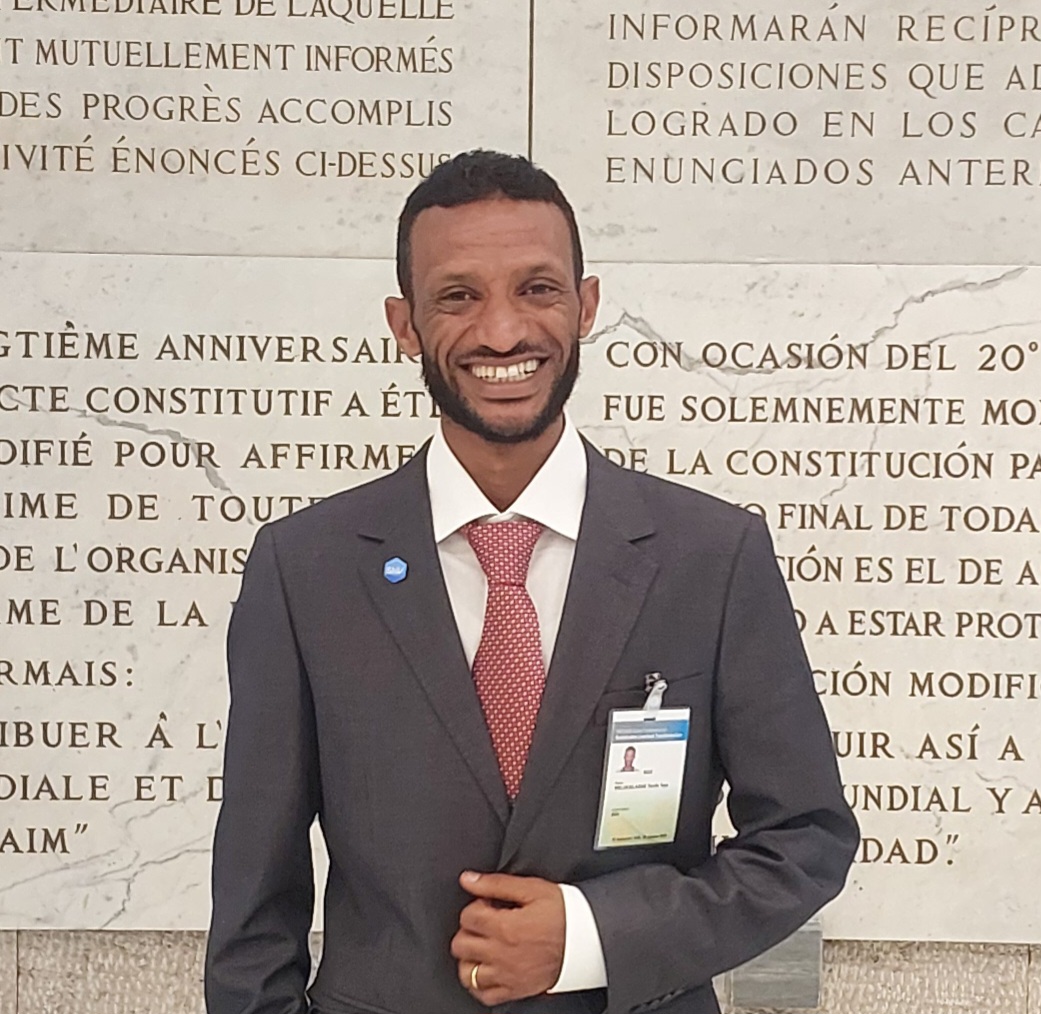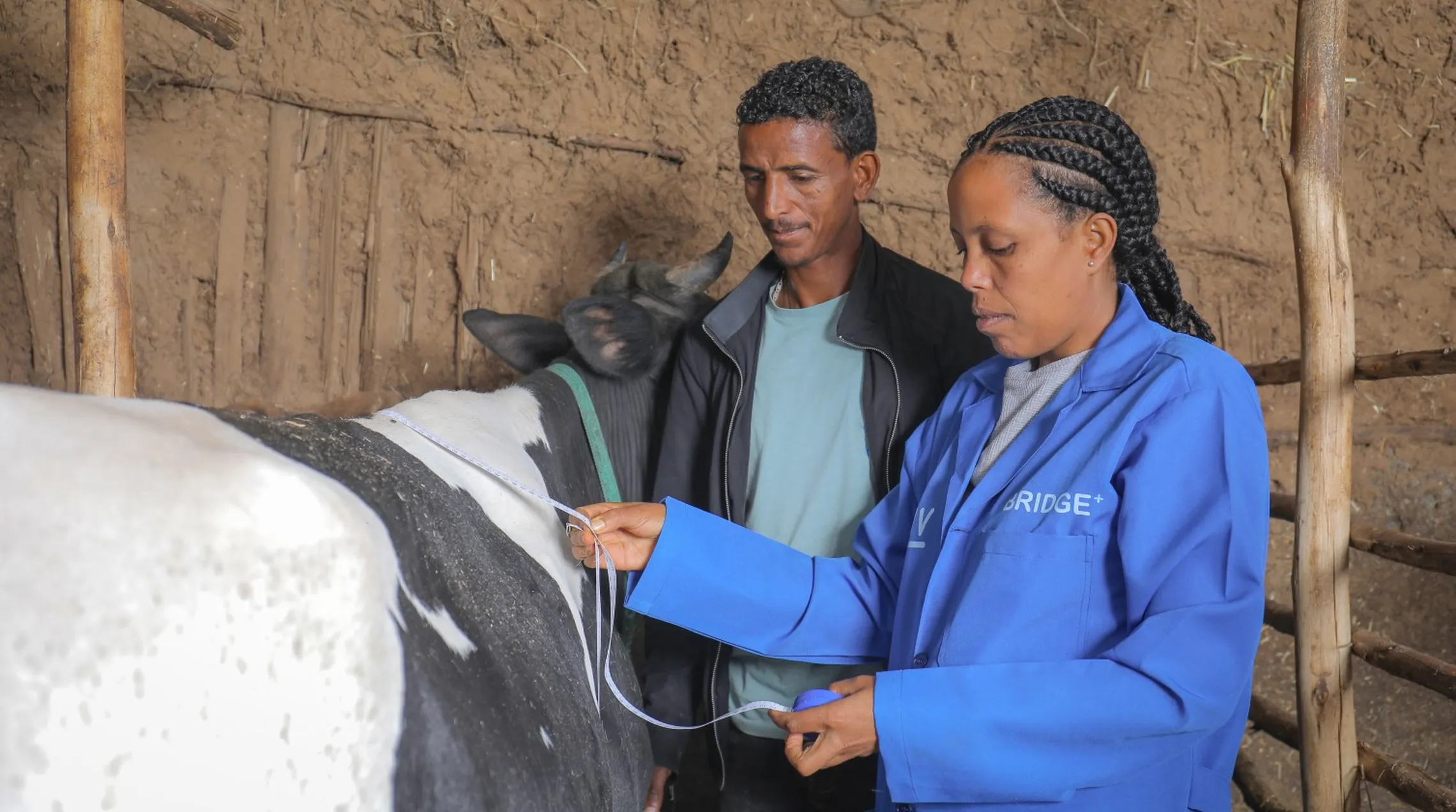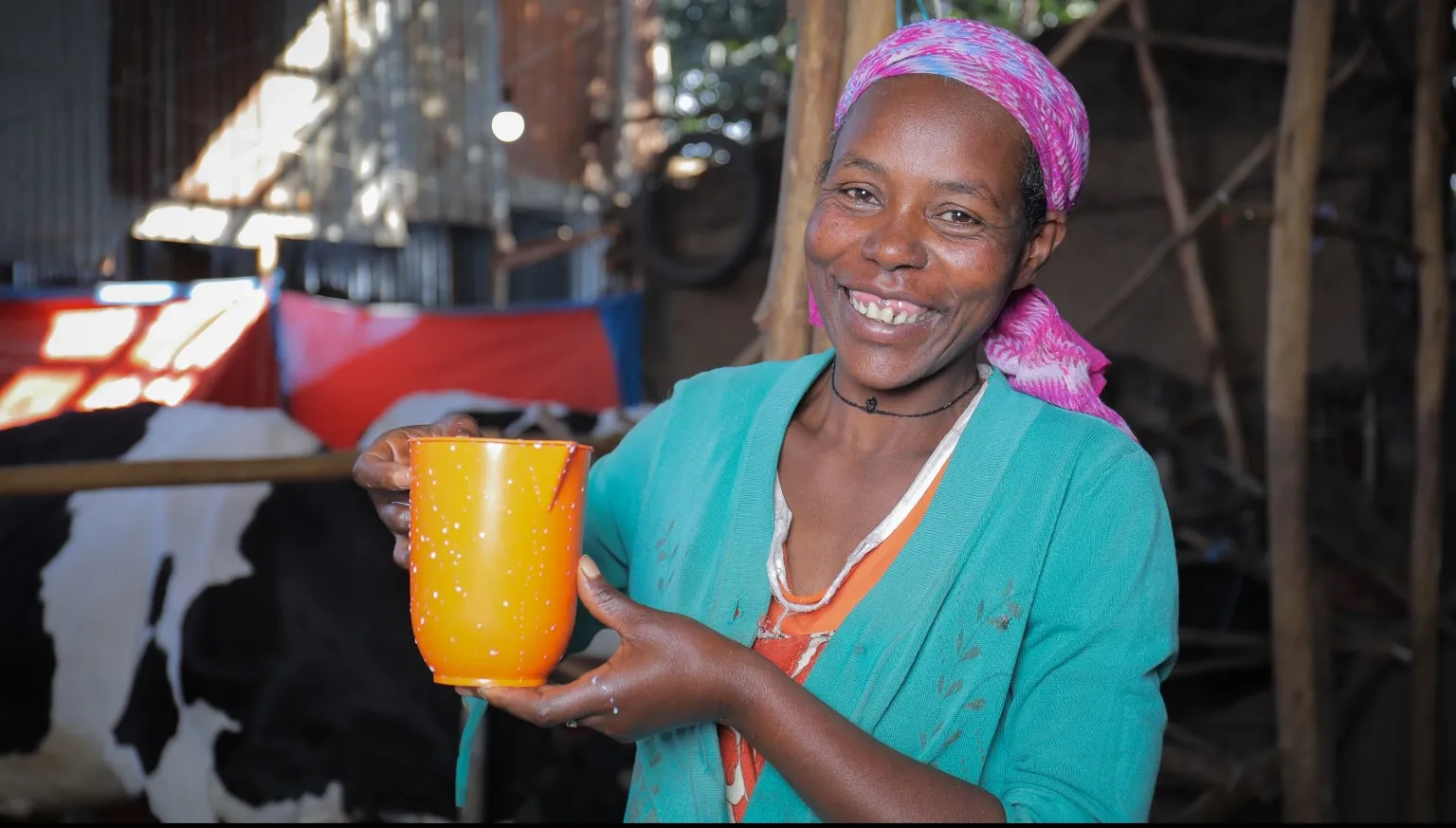Perspective: East Africa’s dairy opportunity: Linking cow science to resilience

Terefe Taye Weldesilassie, Extension Lead Advisor

Dairy farming is a cornerstone of rural economies in many low and middle-income countries, providing nutrition and income for millions. Globally, the sector supports around 1.3 billion people, with more than 150 million smallholder farms depending on milk production for their livelihoods. In 2019, global milk output reached 883 million tonnes, underlining its importance as both a food source and a driver of employment and economic growth.
Yet in many low-income communities, dairy systems continue to fall far short of their potential. Productivity is low, the adoption of climate-smart and cow comfort-focused practices remains limited, and extension service delivery often exhibits a crucial lack of responsiveness to farm-level realities. Consequently, milk yields are constrained—falling significantly short of genetic potential—and overall reproductive performance is compromised due to critical deficiencies in nutrition (feeding), housing, animal health, and water management.
Linked to this, smallholder farmers struggle because they lack tailored advisory services and timely information specific to each cow’s lactation cycle. This results in weak farm management that fails to properly read and respond to cow signals, preventing strategic investment and limiting overall productivity. These challenges—intensified by inadequate infrastructure and limited access to finance—undermine both food security and rural livelihoods.

Why mastering the lactation cycle and cow signals is an innovation
In East Africa, dairy farming is central to community well-being and rural stability. Across the region, new approaches are helping farmers link productivity to animal health and welfare. One such approach, developed by SNV in collaboration with WUR and local partners, focuses on two practical but transformative ideas: the lactation cycle and the cow signals concept. This helps farmers understand when and how their cows are most productive, and what each animal needs at every stage.
The idea is simple but powerful: milk production, fertility, and health are closely tied to the lactation cycle, and the signals cows give through their behaviour and physical cues. Subtle changes in manure consistency, urine colour, body condition, or rumen fill reveal important information about the animal’s condition. Traditional extension models often overlook these signals, offering generic advice that doesn’t align with the cow’s natural rhythms. Our approach empowers dairy farmers to observe, interpret, and respond in real time, leading to better feeding, breeding, and health decisions.
This shift from static to responsive management has been remarkably effective. In Ethiopia, more than 19,000 farmers have adopted the method through Dairy Farmer Schools, significantly improving their cows’ overall performance in both milk production and fertility. The result was a 46% increase in milk yields (an additional average of 800 litres per cow per lactation cycle). Furthermore, this approach positively impacted animal fertility, reduced services per conception, and improved body condition, leading to healthier, less stressed herds alongside higher output.
Scaling up peer learning to reach more farmers
The success of this innovation lies in its peer-to-peer learning model. Dairy Farmer Schools enable farmers to share experiences, interpret cow signals together, and refine techniques collectively. By empowering farmers to manage lactation stages more precisely, knowledge spreads organically through rural communities.
“Simple steps, productive cows,” as one farmer put it. By building networks of practice rather than relying solely on formal training, the model makes learning accessible, affordable, and fast. In Ethiopia, SNV aims to reach 350,000 farmers by 2029, with the ambition to empower one million across East Africa by 2030. The approach—applicable to cows, goats, and sheep alike—fosters skilled, confident farmers who can lead change in their own communities, building sustainable dairy systems that benefit everyone in the value chain.

Beyond productivity: Nutrition, markets, and climate resilience
Improved dairy management has far-reaching benefits. Better lactation management leads to higher, more stable milk yields, strengthening household nutrition and local food systems. Families gain reliable access to protein and essential nutrients, while regional nutrition programmes benefit from a steady supply.
More consistent production also opens access to higher-value markets. In Ethiopia, every 100 litres of milk supports one to two jobs across the value chain. This includes employment in various dairy-related activities such as herding, milking, cleaning, processing, and selling dairy products. An additional 760 litres per cow per lactation could create up to 15 new jobs, depending on scale and efficiency.
The environmental gains are equally significant. Producing more milk per animal reduces emissions per litre, by about 32% in this case, since the same resources yield higher output. More efficient production is therefore both profitable and climate-smart, showing that sustainability and growth can go hand in hand.

From policy to practice: Building systems for scale
At the FAO Global Conference on Sustainable Livestock Transformation in Rome, participants agreed that lasting progress depends on embedding sustainable livestock models within national policy and extension frameworks. For farmer-driven initiatives like this to grow, they must become part of how governments design and deliver agricultural support.
Partnerships with FAO, GIZ, ILRI, and regional institutions such as the African Union’s Inter-African Bureau for Animal Resources (AU-IBAR) are pivotal. Together, they can align training curricula, build extension capacity, and expand peer learning networks—bringing science and field practice closer together.
Scaling also depends on sustainable finance. Public budgets, blended funding, and private investment need to recognise the proven value of farmer-to-farmer learning. When farmers are active partners in knowledge exchange, extension systems become stronger, more adaptive, and more resilient.

Translating shared vision into action
The FAO conference also provided a forum to translate ideas into action. In a roundtable with Ethiopia’s Permanent Representative to the FAO, H.E. Banchiamlak Getachew, and Mr Jan Bade, Acting Deputy Permanent Representative of the Netherlands, discussions focused on embedding this model within Ethiopia’s dairy policies and aligning it with national livestock and rural development strategies.
A shared understanding emerged: the future of dairy in East Africa depends as much on partnerships and responsive systems as it does on technology. Strengthening peer learning, linking advisory services to national programmes, and maintaining consistent collaboration will be essential to drive meaningful change.
Expanding this approach to one million farmers by 2030 is ambitious but achievable. It builds on a holistic strategy grounded in science, inclusivity, and resilience. By aligning with the natural rhythms of cows and investing in people alongside technology, this model has the potential to transform entire rural economies.
This shift can redefine what sustainable dairy farming means—raising milk yields, improving nutrition, empowering women and youth, and strengthening climate resilience. It shows that genuine progress comes from listening, co-creating, and trusting farmers as central actors in change.
Partner with us
Turn science, inclusivity, and resilience into real-world impact.

Terefe Taye Weldesilassie
Extension Lead AdvisorTerefe Taye Weldesilassie is an expert in sustainable dairy development and a strategic leader with one clear goal: to make the dairy sector innovative and profitable for all stakeholders. With an MSc from Wageningen University and over 15 years of experience, he excels at translating science into real-world change across the livestock sector. His career includes key roles as an expert at the Ministry of Agriculture (MoA) and as a researcher, before becoming the Lead Dairy Extension Advisor at SNV. Terefe focuses on practical, climate-smart methods and user-friendly digital tools, enabling farmers to apply science in everyday practice. He was a core contributor to major national initiatives, including Ethiopia’s Livestock Extension Strategy. His most successful innovation—the cow-centric dairy farming approach—has helped smallholder farmers achieve significant gains, producing up to 800 additional litres of milk per cow per lactation cycle. The approach has received high-level recognition, including global validation by the FAO as a top innovation and best practice for sustainable livestock transformation. Terefe actively shares his expertise on national platforms (ESAP) and international stages (IDF Regional Dairy Conference, International Conference on Agricultural Engineering). He also contributes to academia through peer-reviewed publications, underscoring his commitment to scaling accessible, science-driven solutions for sustainable dairy development.